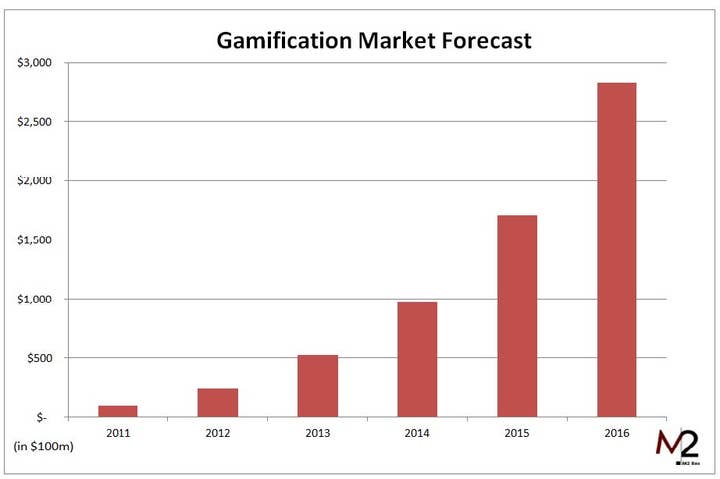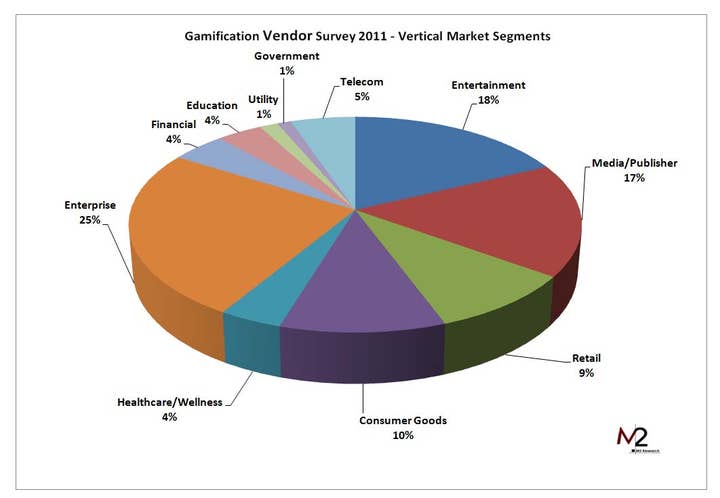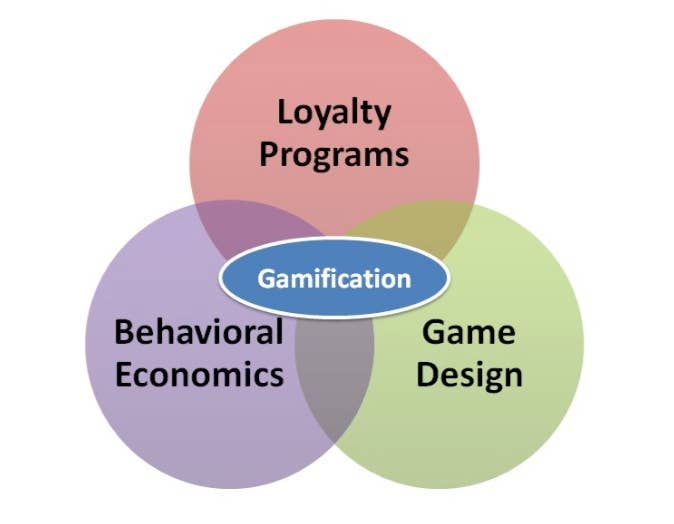Gamification market to reach $2.8 billion in 2016
Report from M2 Research projects tremendous growth
Gamification, the process of applying game mechanics to activities that aren't games, is rapidly becoming a big business, according to a new report by Wanda Meloni of M2 Research. She projects the market to reach $242 million in 2012 (more than double the 2011 total), and to climb to $2.8 billion in 2016.
"Gamification takes advantage of game mechanics to deliver engaging applications, and make non‐game applications more entertaining and appealing," said Meloni. The market for gamification has broadened rapidly, as the process has spread from consumer and media brands to the enterprise, healthcare and educational markets. "The adoption of applying game mechanics in more nontraditional industries has grown exponentially in the past 18 months," noted Meloni.
"The adoption of applying game mechanics in more nontraditional industries has grown exponentially in the past 18 months"
Wanda Meloni, M2 Research
M2 Research estimates that the total market for video games, video game rentals, subscriptions, digital downloads, casual games, social games, mobile games and downloadable content will top $50 billion (not including hardware sales) in 2012. Gamification is still a small part of this market, but its rapid rise shows the increasing social acceptance of games and the realization that game mechanics can be a powerful motivational tool.

The gamification market in 2012 is estimated by M2 Research as 62 percent consumer-driven (down from 91 percent in January 2011) and 38 percent enterprise-driven (up from 9 percent in January 2011). "Currently, enterprise represents the biggest segment of the market for new growth at 25% of the market," said Meloni. Entertainment and Media/Publishing represent the next largest segments at 18% and 17% respectively. "M2 Research expects game design within the enterprise to quickly rise and become the dominant segment of gamification by the end of 2013," Meloni said.

The amazing spread of social games has shown that game mechanics can reach a wide audience of all types of people, with very few few of them being traditional gamers. The basic tools and techniques of game design are being employed in marketing, brand-building, employee reward programs, education and training, and many other areas. Several companies, including Seriosity, Bunchball, and Gigya, have been around for years and have impressive client rosters, including ABC, NBC, CBS, NASA, Microsoft, Chrysler, Cnet, Sprint, and many others.

Pew Research recently completed a study of the future of gamification, noting in their overview: "Tech stakeholders and analysts generally believe the use of game mechanics, feedback loops, and rewards will become more embedded in daily life by 2020, but they are split about how widely the trend will extend. Some say the move to implement more game elements in networked communications will be mostly positive, aiding education, health, business, and training. Some warn it can take the form of invisible, insidious behavioral manipulation."
"Some warn it can take the form of invisible, insidious behavioral manipulation"
Pew Research
The Gartner Group has projected 50% of corporate innovation will be "gamified" by 2015. Deloitte called gamification one of the Top 10 Technology Trends for 2012, noting that "Serious gaming simulations and game mechanics such as leaderboards, achievements, and skill-based learning are becoming embedded in day-to-day business processes, driving adoption, performance, and engagement."
Not everyone believes that gamification is useful, inevitable, or desirable. Ian Bogost, professor at the Georgia Institute of Technology, is blunt: "Gamification is bullshit....More specifically, gamification is marketing bullshit, invented by consultants as a means to capture the wild, coveted beast that is videogames and to domesticate it for use in the grey, hopeless wasteland of big business, where bullshit already reigns anyway."
What do you think?

